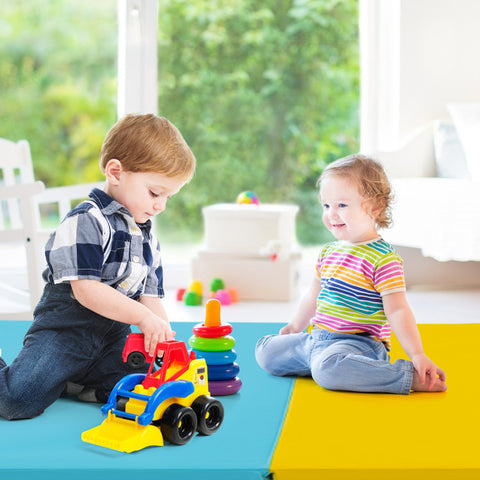News
How Temperature Resistance Affects Gymnastics Mat Performance
Gymnastics mats are engineered for safety, comfort, and durability, but one factor that is often overlooked is temperature resistance. Whether a mat is used in an unheated gym, an outdoor practice area, or a high-temperature storage space, its performance can be dramatically affected by temperature fluctuations.
This article explores the science behind temperature resistance in gymnastics mats, its impact on material stability, and how it affects athletes’ safety and training quality.
1- Understanding Temperature Resistance in Gymnastics Mats
Temperature resistance refers to a mat’s ability to maintain its physical and chemical integrity when exposed to extreme heat or cold.
Most gymnastics mats are made from closed-cell polyethylene (PE) or ethylene-vinyl acetate (EVA) foam, both of which have specific temperature thresholds. When exposed to temperatures beyond their limits, these materials can harden, crack, or lose flexibility — directly affecting their shock absorption capacity.
2- Effects of Temperature on Mat Performance
- In Cold Environments
Cold conditions cause the foam inside gymnastics mats to become stiff and brittle. This reduces the mat’s ability to absorb impact, increasing the risk of injuries such as sprains or bruises. Additionally, vinyl or PVC coverings can contract and become less flexible, making them prone to surface cracks.
- In Hot Environments
High temperatures can soften the foam, leading to excessive compression when athletes land. This may cause instability and uneven surfaces, which can interfere with balance-based activities like handstands and flips. Prolonged exposure to heat can also cause the adhesive layers between foam and vinyl to weaken.
- Sudden Temperature Changes
Rapid transitions between hot and cold environments can cause delamination — the separation of foam layers — or create surface wrinkles, both of which compromise stability and durability.
3- Materials That Improve Temperature Resistance
- Cross-Linked Polyethylene (XLPE) Foam
XLPE foam offers superior thermal stability, retaining its cushioning properties in both hot and cold environments. It is also water-resistant and highly durable, making it ideal for long-term use.
- Thermoplastic Elastomers (TPE)
TPE mats are more adaptable to temperature changes. They remain flexible in cold climates and resist softening under heat, maintaining consistent shock absorption and grip.
- Reinforced Vinyl Coatings
Vinyl covers treated with UV and heat stabilizers protect mats from degradation and surface cracking. They also help maintain mat color and texture under temperature stress.
4- Best Practices for Maintaining Temperature Stability
- Store Mats Indoors: Keep gymnastics mats in temperature-controlled areas, ideally between 15°C–25°C (59°F–77°F).
- Avoid Direct Sunlight: Prolonged UV exposure weakens foam density and vinyl flexibility.
- Allow Gradual Temperature Adjustment: If mats have been stored in cold or hot environments, allow them to reach room temperature before use.
- Use Insulated Storage Covers: Protective covers prevent rapid thermal shifts during transport.
5- Why Temperature Resistance Matters for Safety
A temperature-resistant gymnastics mat doesn’t just last longer — it directly impacts athlete safety. Consistent shock absorption reduces injury risks, while stable surfaces prevent slips and falls. Coaches and gym owners should always consider temperature resistance as a key feature, especially in regions with varying climates or outdoor training setups.
Conclusion
Temperature resistance is a crucial, yet often underestimated, characteristic of gymnastics mats. It determines not only the mat’s longevity and performance consistency but also the safety and comfort of athletes.
Choosing mats made from high-quality foams and reinforced vinyl ensures reliable performance across seasons, making them a smart investment for professional gyms, schools, and home studios alike.
FAQs
1. What temperature range is safe for gymnastics mats?
Most quality mats can safely operate between 10°C to 35°C (50°F–95°F). Beyond this range, foam density and vinyl integrity may be compromised.
2. Can I use my gymnastics mat outdoors?
Yes, but it’s essential to choose mats labeled as UV-resistant and weatherproof. Always store them indoors after use.
3. How do I know if my mat is losing its temperature resistance?
Signs include surface cracking, uneven texture, excessive softness, or a loss of rebound when pressed.
4. Are temperature-resistant mats more expensive?
Slightly, but the extended lifespan and safety benefits usually offset the initial cost.
5. Does temperature affect cleaning or maintenance?
Yes. Cleaning agents work best at room temperature; extreme cold can harden residues, while heat may loosen adhesives.


